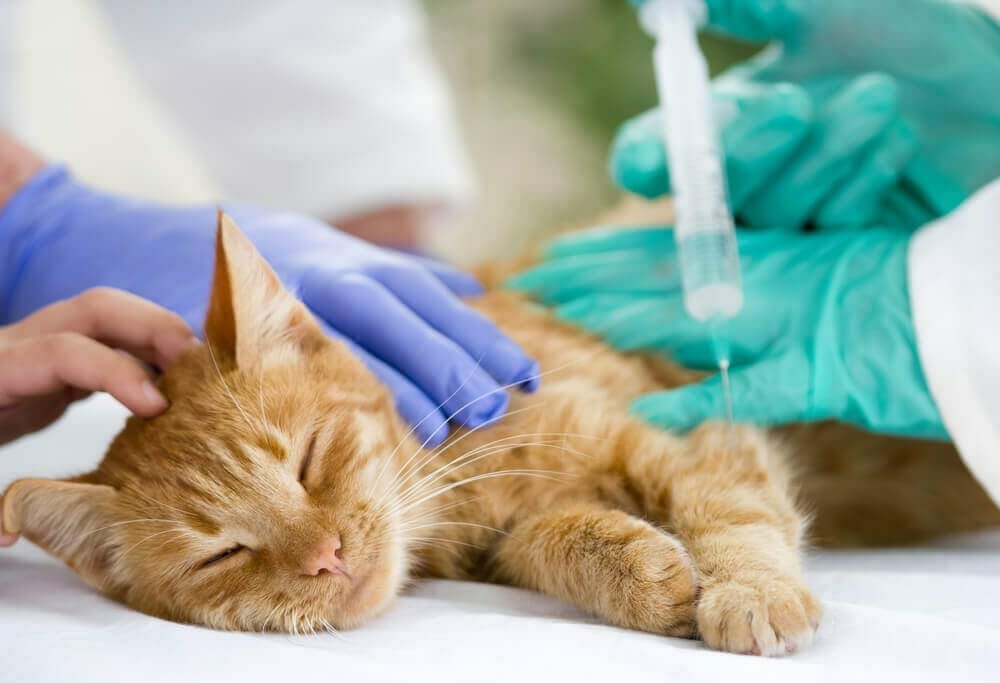Understanding Feline Diabetes
PIA Australia
June 28, 2017
Nadia Crighton caught up with Dr Richard Gowan, owner and leading Feline Veterinarian at The Cat Clinic in Victoria, to discuss cat diabetes. Find out what this diagnosis means for your feisty feline and how to spot a problem.
So, you’ve just discovered that your precious kitty is diabetic. Firstly, it’s important to breathe and remember the huge advancements in modern veterinary medicine will allow your cat to live a normal life. The most incredible news is that because of this medical progress, in many cases, treatment will completely cure your cat. That’s right, cat diabetes is curable (cue sigh of relief).
“One of the biggest changes regarding our outlook on feline diabetes is we can now regard it as a curable condition for many patients,” Dr Gowan says. “With improvement in both nutritional and pharmaceutical management, most patients are very easily and quickly managed, and many achieve remission soon after diagnosis with these new treatment options.”
This is a huge step in the right direction, however, it does pose the question; can we help prevent our loveable lap-warmers from ever receiving this type of treatment and diagnosis in the first place? Once again, the giant elephant in the room steps forward. Like with so many medical conditions facing our pets, obesity is the main trigger for feline diabetes.
“The majority of cats that become diabetic, have been or are overweight,” Dr Gowan warns. “This is the single largest risk factor for developing diabetes in cats (and other species too).”
It is very important to ensure that your middle-aged cat is kept in tip-top shape and does not consume excessive calories. So, go easy on the tidbits and make sure kitty is having a good dose of daily exercise. This is especially important for more sedentary cats or those who dwell mainly indoors.
“We find that the best way to reduce weight gain is to increase your indoor cat’s environmental stimulation through forage or activity feeding,” Dr Gowan recommends. “Many meals can be fed in puzzle feeder bowls and toys, allowing cats to express more instinctual hunting and foraging behaviours.”
Dr Gowan is also quick to remind owners that dry biscuits are more calorie dense sources of excellent nutrition. In other words, ensure you are only feeding the correct portions and use slow feeders or puzzle bowls to limit excessive meals.
#Feline Diabetes Facts
Did you know that the beloved Burmese is several times more likely to develop diabetes than a domestic cat?
- Increase in thirst
- Increase in urination
- Weight loss
- Dull lifeless coat
Dr Gowan also warns that some cats present as “sick” diabetic patients and are considered a medical emergency. “Many of these cats require intensive hospital management to get through this diabetic crisis.”
#Feline Diabetes Facts
Did you know that genetics can also play a role? Roughly one in 120 cats will develop feline diabetes.
TREATMENT
Once diagnosed, most cats will require twice daily insulin injections. As your vet will need to reduce the high glucose levels to a normal level as quickly as possible. “This is easy to master, and most cats don’t even mind,” Dr Gowan says.
Then it’s all about management of the condition to maximise the chances of a complete remission. “This is best achieved through the use of modern insulin administration, nutritional support and weight management.”
Dr Gowan also suggests that owners of insulin dependent cats consider learning to test their cat’s blood glucose levels every morning before the insulin administration. “This is ideal for human diabetic patients, as micro-adjustments in insulin doses can be tailored according to the glucose test results,” Dr Gowan explains. “Studies have shown that regular home monitoring of diabetic cats, working in conjunction with their veterinary team, gives the highest chances of diabetic control and ultimately – diabetic remission.”
LONG TERM CARE
It’s very important to look at the whole picture when alleviating feline diabetes. This includes; nutritional management, increase activity and weight-control.
“Achieving optimal weight in patients is the goal to help minimise the long-term likelihood of a permanent diabetic state,” Dr Gowan says. “Specific calorie restrictive diets, increased exercise and activity or diets specifically formulated to decrease insulin requirements are used in this manner.”
Dr Richard Gowan graduated from the University of Queensland Veterinary School in 1998. Shortly after graduating, he gained a position at the Creek Road Cat Clinic, Australia’s largest cat-only hospital. He started the Cat Clinic in Melbourne in 2005, which is now Melbourne’s largest cat-only clinic. He regularly presents lectures on feline medicine at veterinary conferences and is actively involved in veterinary continuing education in all areas of feline health and medicine. Richard is actively involved in advancing the veterinary profession and has served on various committees within the Australian Veterinary Association over the last 17 years.

8 Comment